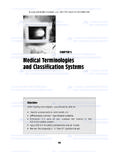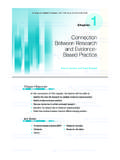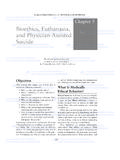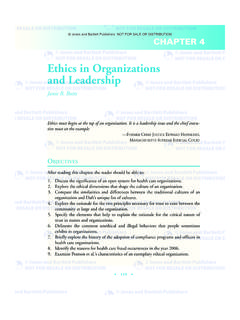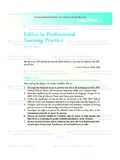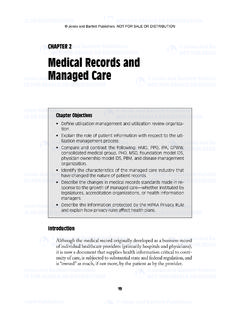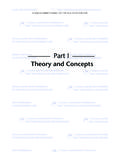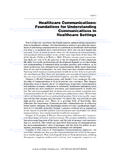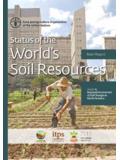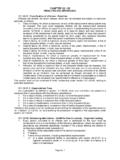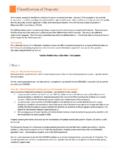Transcription of Offender Classification and Assessment
1 8/9/07 12:20 PM Page 25. Jones and Bartlett Publishers. NOT FOR SALE OR DISTRIBUTION. Offender Classification 2. and Assessment Offender Classification and Assessment are two related but distinct processes in the operation of the prison system and community corrections. Both processes permeate the correctional processes from admission to the correctional system and incarceration through sentence completion, release, and postincarceration supervision (Austin, 2003). Classification and Assessment are typically performed by correctional coun- selors who have three goals in mind: (1) the public's need for protection and community safety; (2) the identification and matching of Offender needs for treatment and management with correctional resources; and (3) the improve- ment of correctional operation and performance while reducing costs and re- cidivism (Lauren, 1997). Classification Classification in the prison systems refers to the procedure of placing prisoners in one of several custody levels ( , maximum, close, medium, and minimum).
2 To match Offender needs with correctional resources ( , the type of facility to which they will be assigned, and the level of supervision they will receive once they are there). Prison Classification systems are intended to differentiate among prisoners who pose different security risks and/or have various management is- sues (Austin, 2003; Schmalleger & Smykla, 2001). 25. 8/9/07 12:20 PM Page 26. Jones and Bartlett Publishers. NOT FOR SALE OR DISTRIBUTION. 26 | Offender Classification AND Assessment . Subjective and Objective Classifications Subjective Classification , which relies mainly on the experience and judgment of prison administrators, was used by all of the state prison systems in the early period of the nation's corrections. Prison officials would decide where to house an inmate and under what type of supervision and security (Austin, 2003). Even today, the subjective Classification has not been entirely abandoned.
3 For example, the use of overrides allows correctional staff to change the scored Classification level according to the policies of the agency. The number of over- rides accounts for 5 to 15% of all classified inmate cases, indicating that it is nec- essary to combine the objective and standard evaluations with the professional judgment of trained Classification personnel. Objective Classification has the following core features (Austin, 2003): 1. Reliable and valid criteria that have been examined through empirical research are used to establish a prisoner's custody level. 2. Well-trained and specialized professional personnel perform classifica- tion duties, including recommendations that the custody level of an of- fender be increased, decreased, or maintained. They may also make suggestions about transfers. 3. Each Classification decision and the considerations used to make each decision are documented and stored for analysis and examination.
4 Considerable changes in prison Classification systems have taken place dur- ing the past three decades. The California Department of Corrections and the Federal Bureau of Prisons were the pioneers in using objective Classification sys- tems before 1980. Since then, virtually all 50 states as well as Puerto Rico and the Virgin Islands have fully implemented objective systems. With the proliferation of the application of the objective Classification sys- tems in corrections, new research has been conducted that has helped to revise the first generation of prison Classification systems by identifying their limita- tions (Austin, 2003; Andrews & Bonta, 2003). External and Internal Classifications and Reclassification All prisoners experience initial (external), internal, and reclassification processes. The initial Classification is also called external prison Classification , which places an Offender entering the prison system at a facility classified at the custody level where the prisoner will remain.
5 Most states designate prison facil- ities by custody levels such as maximum, close, medium, or minimum, but some states use a system of numbered levels Level 1, 2, 3 or higher, with the level 1. facilities used for inmates who pose the least amount of danger to self and oth- ers (Gaines & Miller, 2003). 8/9/07 12:20 PM Page 27. Jones and Bartlett Publishers. NOT FOR SALE OR DISTRIBUTION. Assessment | 27. The typical external prison Classification systems use scoring forms that evaluate the Offender 's current offense(s), prior criminal record and history, and other background attributes ( , age, medical ailments, mental disorders, and other dysfunctions). Although many factors used for Classification ( , drug and alcohol use, history of infractions in corrections, sentence length, severity of the offense, and time left to serve) have little predictive capability for inmate risk, they are given primary consideration in the custody designation process (Andrews & Bonta, 2003; Austin, 2003).
6 Once a prisoner arrives at a facility, she or he will go through internal clas- sification a process that determines the unit and cell assignments and pro- grams to match the prisoner's risk and needs with the security and treatment characteristics of the unit and programs. After a designated period of time ( , annually), offenders may undergo reclassification, a review process within a prison system that updates and pos- sibly revises the current Classification levels of inmates. However, changes in the conditions of the Offender may entail reclassification during other periods. Reclassification places greater emphasis on the prisoner's conduct during in- carceration, such as degree of program participation, gang membership, his- tory of violence, and recent disciplinary actions (Austin, 2003). Classification in community corrections consists of identifying and select- ing supervision strategies ( , levels of supervision) on the basis of assessing the risks and needs of the offenders.
7 Assessment Assessment is a corrections process that is closely related to but distinct from cor- rectional Classification . Instruments for correctional Assessment typically cover two areas: (1) risk, and (2) needs of the Offender . The risk refers to the danger to self, others, and the community that is presented by the Offender . The relevant fac- tors include criminal history, current conviction(s) and violations, and danger- ousness of the offense ( , violent crimes and sex offenses are considered more dangerous than nonviolent and nonsex offenses). The Assessment of the Offender 's needs may include measurements related to education, employment, financial sit- uation, interpersonal relationships, family/marital conditions, accommodation, leisure and recreation, companions, alcohol and drug abuse problems, suitability for treatment, mental health issues and attitudes toward crime, convention, sen- tence, and the criminal justice systems (Andrews & Bonta, 2003).
8 Assessment is closely associated with correctional Classification in that the Offender 's scores on Assessment tools often serve as one of the important bases for decisions in the initial and reclassification of the individual. In community corrections, the scores often determine which programs to place the Offender in 8/9/07 12:20 PM Page 28. Jones and Bartlett Publishers. NOT FOR SALE OR DISTRIBUTION. 28 | Offender Classification AND Assessment . and the intensiveness of the supervision. Assessing the Offender 's risk, needs, and responsivity (that is, the Offender 's ability, learning style, and readiness) for treatment allows correctional staff to use valuable correctional resources much more efficiently according to the supervision needs. Assessment differs from Classification , however, because it is frequently per- formed for offenders for purposes other than Classification during the correc- tional process the period that begins when entering corrections and concludes with postprison supervision in the community.
9 The scores of the Assessment do not always affect offenders' Classification levels. For example, Assessment scores may be used for identifying clients' mental health or physical health needs. The Level of Service Inventory-Revised (LSI-R). During the past 20 years, significant developments have occurred in the area of Offender Assessment . One of these is the Level of Service Inventory-Revised (LSI-R) a theoretically based Offender risk-needs Assessment that has the most all-embracing research literature among Offender Assessment instruments (An- drews & Bonta, 2003). In addition, it appears to be the most frequently used in- strument for Classification and Assessment in corrections both in the United States and Canada (Bonta, 2002). LSI-R is an actuarial (predictive) tool that was created and developed in Canadian forensic settings (Andrews & Bonta, 1995;. Mihailides, Jude, & Van den Bossche, 2005).
10 LSI-R has 54 items for consideration. The items are divided into 10 sub- scales that assess the Offender 's criminal history, education/employment, fi- nances, family/marital conditions, accommodation, leisure and recreation, companions, alcohol/drug problems, emotional/personal issues, and attitude/. orientation (Andrews & Bonta, 2003). Despite its demonstrated use with gen- eral offending populations, the LSI-R was not developed for sexual offenders or mentally disordered offenders. The total number of checked items on LSI-R provides a total score; the higher the score, the greater the risk of criminal behavior. Correctional author- ities may use offenders' scores on LSI-R to categorize them at three risk levels. Each state may define its own cutoff scores for supervision. For example, some states may use the following cutoff scores: 29 or higher = maximum-risk level;. 19 28 = medium risk; and 0 18 = minimum risk.
